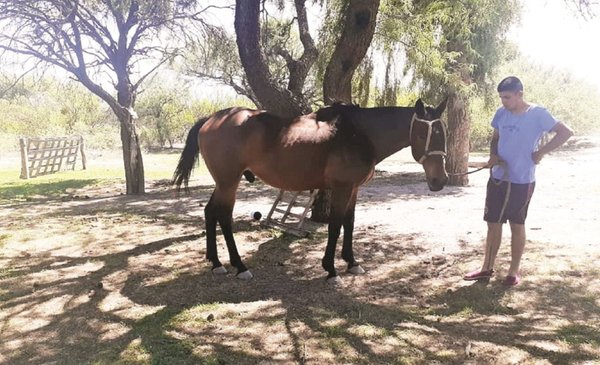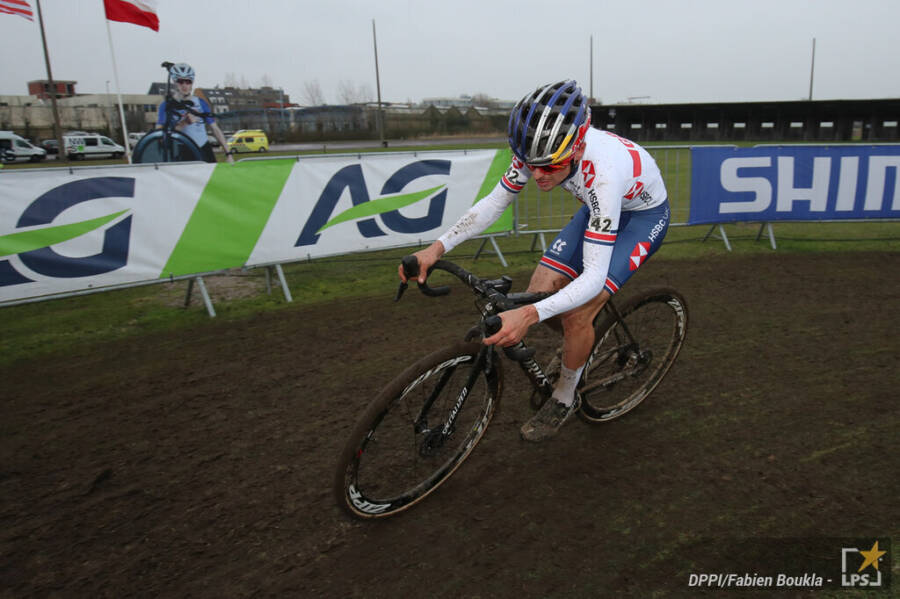The identification of a single case of equine infectious anemia (VIA), can trigger an alert throughout the province because it represents a danger to farms. A week ago, the Field Laboratory informed the National Agri-food Health Service (Senasa) of the positive result of a chestnut that belonged to a producer in a field in the department of Pueyrredón. There are already eight cases in San Luis so far this year.
The health institution collaborates with the Ministry of Production, the Sanluiseña Rural Society and the College of Veterinarians and insists that the owners do the studies and have the updated booklet, to avoid the spread of the EIA.
“Once the analyzes are positive, the protocol indicates that the blood must be drawn again from the animal and the samples sent in triplicate to Buenos Aires. He tested positive again. Previously, we took steps to remove the horse,” said Emilio Parnisari, veterinarian in charge of the institution’s San Luis office.
There are already eight cases of EIA so far this year, they ensure that the virus comes from other provinces, “they do it clandestinely without declaring the health correspondent,” Parnisari said.
Sad ending. When infectious anemia is detected, the animals are sacrificed.
The procedure continues with the veterinarian who performed the extraction, the pharmacological protocol is prepared to induce respiratory arrest and the welfare conditions of the animal are met. “This disease has no vaccine, no treatment. That’s why the way to control it is the detection and elimination of positive animals. It is a virus that mutates continuously and it is not easy to get a vaccine, tests have been carried out in China, but there is nothing concrete to combat infectious anemia, which is endemic and comes from other provinces, in this case from Santa Fe. the blood through the gadfly which is its vector, through the use of needles shared between the horses, or through the bridles”, specified Parnisari.
For more information, Parnisari indicated to contact the emails [email protected] or [email protected].
What follows is to sample the rest of the horses and hope that they haven’t been infected. “Blood is drawn from equines that have been in contact with it and we go around to find out if there are any others that may have had contact with the vector. If a trace is made of it, this information is generally difficult to obtain”, explained the veterinarian and added that the infection occurs only between horses, mares, donkeys and mules.
“The animal may or may not have symptoms. The horse can be sick and you never know. Anemia is to horses what AIDS does to people,” she pointed out and continued: “In this case when they were putting anesthesia the horse went into cardiac arrest, he was having problems. If they had to operate, the horse could not have tolerated the anesthesia due to this hemodynamic problem and there you have a sign of the disease”.
The institutions ask that owners who buy horses do so with the corresponding documents, with the guarantee that the animal is healthy.
“Senasa will collaborate with the environmental police in the checks, it is important that those who organize events such as races, skills and those who collect horses from different origins are vigilant and ask for documentation, this is a way to take care of the rodeo. We believe that anyone who doesn’t notify works clandestinely. When we become aware of these meetings, we suspend the events,” Parnisari said, adding that the key moment is when the horses have to be taken out of the establishment, go from one field to another or take them to events, they must meet two requirements : get tested for anemia and get vaccinated against the flu.
“The analysis has a cost of $750 if there are less than three samples, if the vet brings a larger amount, a promotional price is made”, Micaela Álvarez (Veterinary Medical Director of the Field Laboratory)
The specialist said that it is the vets who make up the health card. “That equine infectious anemia does not spread depends on the responsibility of the owners and the commitment they have with their animals, urgent collaboration is needed”, she concluded.
Teamwork
The Ministry of Production, the Sanluiseña Rural Society (SRSL) and the Veterinary College, began a pilot test in August that includes blood sampling, vaccinations and chipping horses.
“Unfortunately there is not much awareness on this issue. We emphasize the gaucho associations, it is very important that they understand that having an animal implies inevitable responsibilities such as administering vaccines, getting tested and monitoring health. Everyone should do it, even those who play sports with horses. Because they are the ones who move animals the most,” said Yeny Yurchag, president of the RSSL.
While the initiative is aimed at Rural members, the Veterinary College offers a discount on medical records, the Rural Society pays vet fees, and the Field Laboratory offers sample analysis.
“The Coggins test is the only one approved by Senasa and has a cost that varies according to the number of samples that a veterinarian brings to be analyzed, if there are fewer than three it costs 750 pesos each, and if it is more, it is done a promotional price of 650 pesos each. There will be a small increase in inputs in mid-December, due to inflation and the values will need to be updated,” said veterinary doctor Micaela Álvarez, director of the Field Laboratory.


